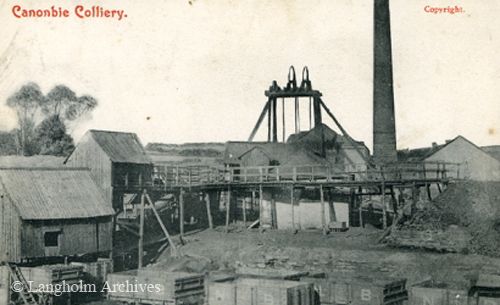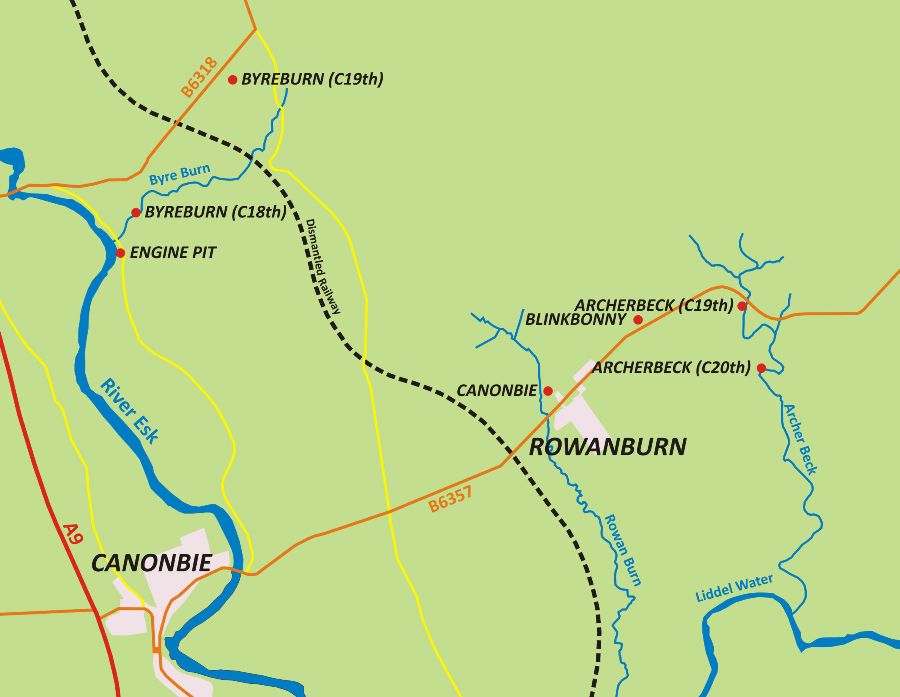
Canonbie Colliery
Used with permission from Langholm Archive Group
The exposed part of the coalfield is roughly triangular, with a base of two miles and the other two sides one-and-a-half miles long, but there are no workings south of the Rowanburn Fault. The seams dips southwards, under newer rocks, and are also faulted down into the Solway syncline, where they achieve a maximum depth of around 4,600 feet. There are six thick seams of bituminous coal in 230 feet of strata:-
Feet Six Foot 7.0 Nine Foot 19.0 Three Foot 5.3 Five Foot 5.3 Black Top 4.8 Seven Foot 5.2
Collieries were working at Archerbeck and Byreburn in the 1830s. The former had two seams, one 5 feet 10 inches thick; and, three yards below it, another 3 feet 4 inches thick.1 The latter was drained by a flop jack, or water bucket, engine similar to the one which remains at Wanlockhead.
Canonbie colliery, which was sunk by the Duke of Buccleuch before 1854, worked until 1920. It worked the Nine Feet, Five Feet, Black Top and Seven Feet seams. Another pit, at Archerbeck, worked the Two Feet seam between 1935 and 1940.2
- New Statistical Account – Vol.4, 1834-45, page 486
- Gazetteer of British Collieries, copy in NMRS Records


